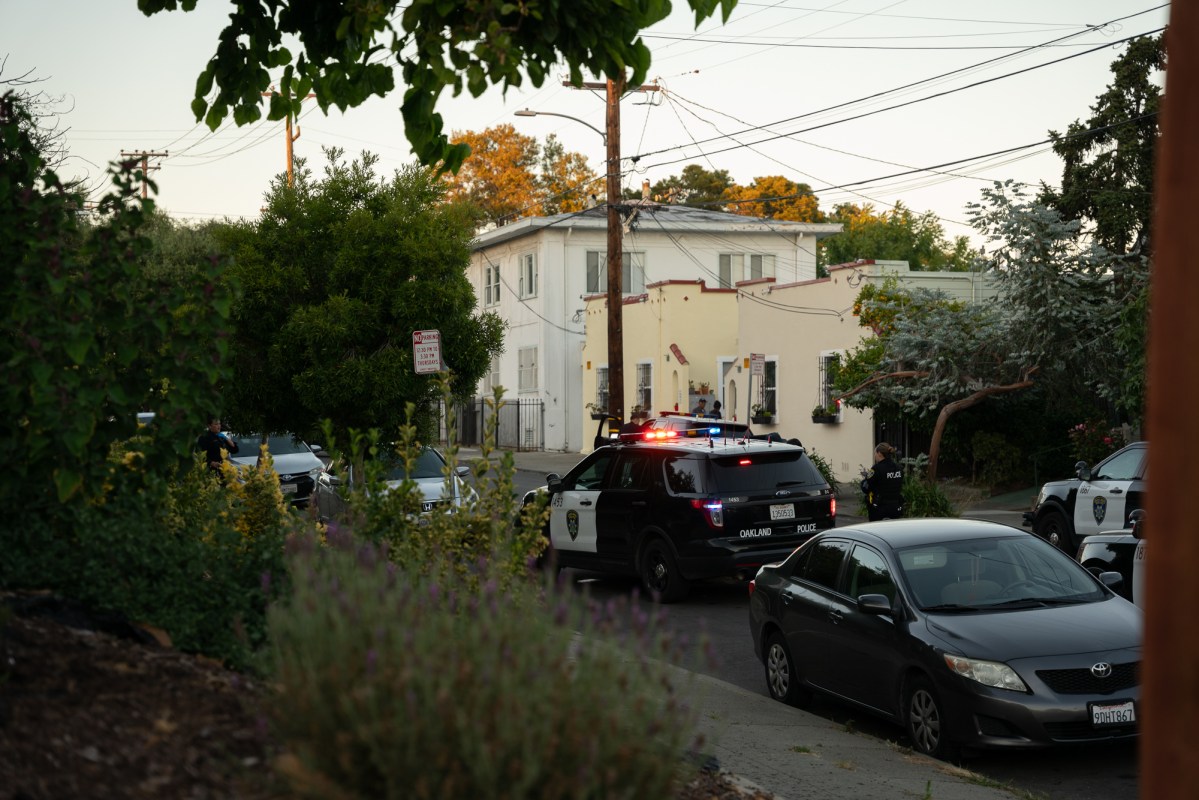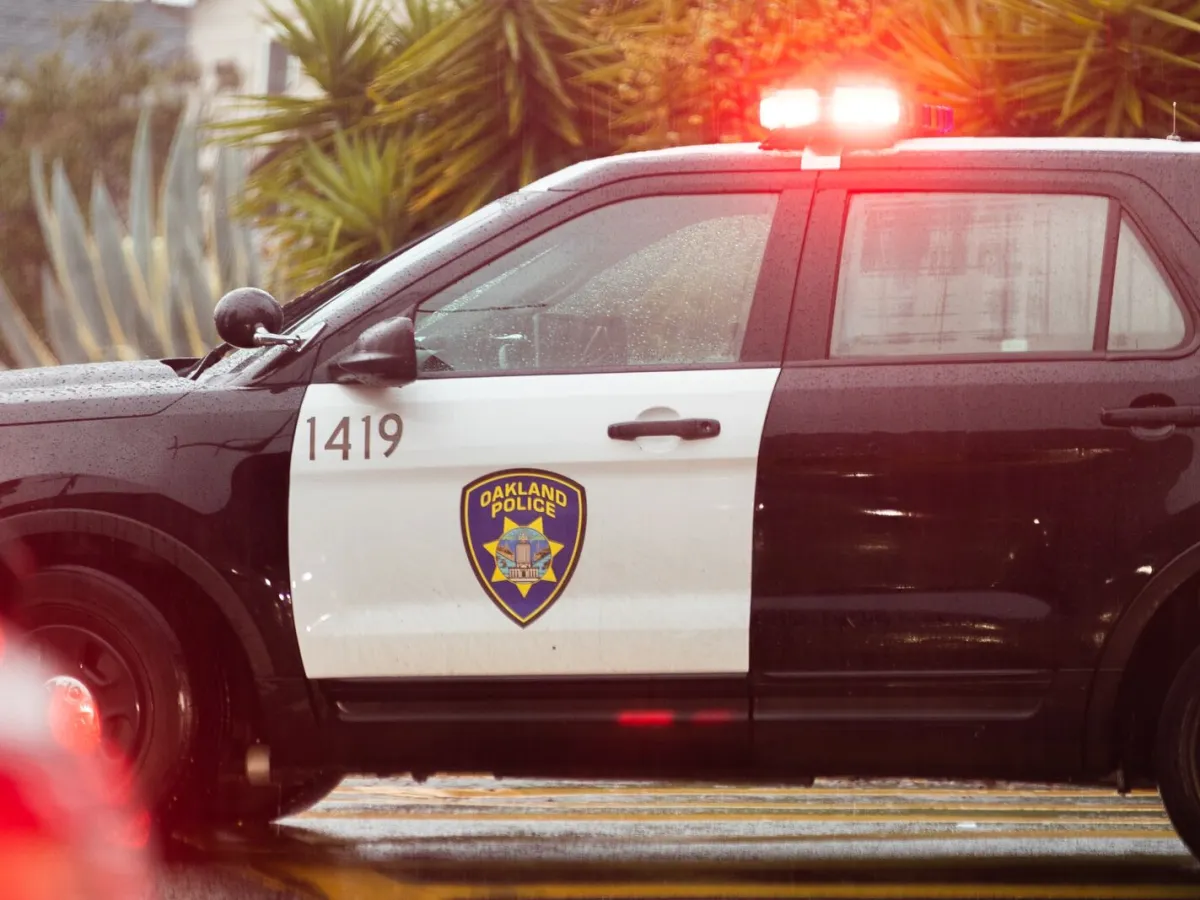For more than half a century, Oakland has suffered a seemingly intractable epidemic of violence. According to one study, between 1985 and 2017 the city saw an average of 107 homicides each year, a level as high as six times the state and national averages. Over 4,000 people were killed in Oakland from 1985 to present, most of them by someone with a gun.
There were some periods of decreasing violence. One of the biggest drops was between 2013 and 2018, when shootings fell by 20% and homicides by 31%.
City leaders have credited this historic five-year decline in violence to a program that launched in 2012, called Ceasefire.
Researchers have found some evidence supporting this claim. A 2019 study led by researchers at Northeastern University found that at-risk people who took part in Ceasefire were less likely to become a victim of gun violence or to be arrested for harming someone else. Even taking into account the broader decline in gun violence nationally, and demographic changes in Oakland, the researchers attributed 31% of the drop in gun homicides from 2010 to 2017 to Ceasefire.
“Our community has come together to offer individuals a new path forward, and this study proves that while we have made great strides to save lives and reduce the trauma of gun violence in our neighborhoods, we still have much work to do,” said then-Oakland mayor Libby Schaaf.
Related
Why have murders and shootings risen in Oakland? New report points to Ceasefire’s demise
The city’s massive spike in violence is due to the unraveling of its marquee prevention strategy, according to a new audit. Leaders say they’re planning a turnaround.
This progress rapidly unraveled during the pandemic as shootings and killings rose to levels that hadn’t been witnessed in Oakland in more than a decade. Murders peaked in 2021, when 134 people were killed. Shootings remain high above previous levels, according to police data.
Now, a team of consultants who helped Oakland run Ceasefire during the years the city saw big declines in violence say the recent spike in shootings and homicides was caused by a breakdown in the program due to a lack of political support. Combined with a well-intentioned but ineffective reshuffling of the police department’s resources in 2021 and the pandemic, which limited the personal contacts Ceasefire relied on, they say, the level of violence in Oakland has shot up to levels unseen in over a decade.
To understand all of this, including the new audit’s findings, it’s important to have a good understanding of Ceasefire. What exactly is this gun violence prevention strategy? How are police, violence interrupters, social workers, and community leaders involved? And what are Ceasefire’s origins?
Less than half of 1% of the city’s population is responsible for a majority of gun violence
The key insight behind Oakland’s Ceasefire program is that most of the shootings and homicides that happen in the city involve only a few hundred people, most of them young adult men who belong to gangs or other criminal groups.
Ceasefire focuses intensively on this population group by identifying and locating these individuals and the groups and gangs with which they’re involved, and offering them resources and incentives to stop engaging in violence. Those who continue to engage in violence are targeted by special teams of police who are trained in investigating gun crimes and arresting dangerous fugitives. All of this requires a huge amount of precise information about the people most at risk of gun violence.
“Ceasefire is an intelligence-based, intelligence-driven strategy,” Reygan Cunningham, one of the consultants behind the new Ceasefire audit, told the Oakland City Council on Tuesday.
Cunningham’s organization, the California Partnership for Safe Communities, has conducted several “problem analyses” for Oakland, studies that delve into crime data and police records to name the people at the highest risk for shooting someone or being shot.
According to Vaughn Crandell, the executive director of the California Partnership for Safe Communities, the Ceasefire approach starts with a “deep analysis of every person involved in violence” in a given city.
Oakland’s 2017 problem analysis found that somewhere between 1,540 and 1,770 at-risk people were members of around 66 groups or gangs. Of these, around 10 of the gangs and groups were responsible for 55 homicides. The city and its consultants mapped the social networks of these individuals, tracing their connections to other groups either in the form of alliances or feuds. They also mapped the territories where these groups and gangs committed much of the city’s violence.
Equipped with this information, from 2012 to 2019 Ceasefire leaders, including OPD and members of Oakland Unite, the precursor of the Department of Violence Prevention, invited dozens of at-risk people to attend “call-ins.” During a call-in meeting, often held at a church or other community space, Ceasefire leaders explained what would happen if individuals continued to engage in risky behaviors like robberies and shootings—the message was that they would most likely end up dead or in prison. To help at-risk residents escape this fate, Ceasefire partners, including community organizations, offered resources like job training, counseling, education, life coaching, and referrals to drug treatment or other help.
“The purpose of that meeting is to get ahead of retaliatory shootings,” Cunningham told the City Council on Tuesday.
The program also relies on violence interrupters, often people formerly involved in street violence who have turned their lives around and now work to intervene when a shooting happens. They were tasked with visiting with victims, family members, and even suspected perpetrators of violence and counseling them not to retaliate or continue harming others.
“The real glue of Ceasefire is developing relationships with the young men who feel like life is hopeless, connections that help them try to figure out ways to turn their lives around,” Rev. George Cummings of Imani Community Church and an active participant in Ceasefire, said in 2014 as the city was beginning to ramp up its call-ins.
Individuals who continued to engage in violence became the subject of intense police surveillance, culminating in arrests and prosecutions. In one March 2013 police operation, more than 200 officers from OPD and other agencies raided homes in East Oakland, Antioch, Brentwood, and Pacifica, arresting 18 people wanted for murder, assault, robbery, and other offenses. Alleged members of the Case Gang, a violent offshoot of the notorious Nut Case gang that originated in West Oakland in the early 2000s, many of these suspects had been invited to attend Ceasefire’s October 2012 call-in, one of the first. Still, they continued to engage in violent activities, including a running feud with another violent group called the Money Team.

At Tuesday’s City Council meeting, Holly Joshi, the new leader of the Department of Violence Prevention, said that one very important aspect of Oakland’s Ceasefire program is “deconfliction.” Because Ceasefire involves both police and non-police service providers working in tandem, there’s always the possibility that at-risk people won’t want to open up to service providers and accept help. This is because someone involved in violence might suspect that a service provider, violence interrupter, or counselor might actually be working too closely with the police, helping to build a case against them. Joshi said Ceasefire is designed to avoid this.
“We are just getting the names of people who are at the center of violence but don’t have buildable cases against them yet,” she said Tuesday. The call-ins and “custom notifications,” when Ceasefire staff reach out directly to one individual, are focused on people who aren’t yet the target of a police investigation, and that’s the point—to help that person stop engaging in violence that will result in their death or incarceration.
Who came up with the Ceasefire strategy?
Oakland’s Ceasefire program is a mixture of different insights and strategies gleaned from different cities over many years, as well as some practices that are unique to here.
But Oakland, like many cities, owes a lot to the “Boston Gun Project,” a research and crime-fighting experiment launched in Boston in 1995 by Harvard researcher David Kennedy. At the time, Boston, like the rest of the nation, was experiencing one of the highest rates of murder in its history. Blanket crime-fighting efforts to crack down on property crime, drugs, and graffiti weren’t working, so the Boston Gun Project brought together researchers and police to focus only on gun violence.
This turned into “Operation Ceasefire,” a program in which Boston’s police identified the people involved in gun violence, letting them know they were being watched closely, and then “pulling every lever” legally available to arrest and prosecute these individuals. Boston’s Ceasefire also included an offer of services to at-risk people to help them change their lives, but it was more focused on enforcement than Oakland and some other cities’ later versions of the program.
Through the late 1990s, Boston saw big declines in murders and shootings. Other cities noticed Boston’s good news and implemented similar programs; some also witnessed big drops in violence. However, gun violence eventually got worse in Boston again. Kennedy, the academic at the center of Boston’s Ceasefire strategy, wrote many years later in his book, “Don’t Shoot,” that politics and bureaucratic infighting among city departments interfered with the successful implementation of Ceasefire.
Today, dozens of cities use programs like Ceasefire, with mixed results, to address gun violence.
When did Oakland first begin using Ceasefire?
There have been three phases of Ceasefire in Oakland’s history. The city tried to roll out the program in 2007 and again in 2011, but it isn’t clear what impact these iterations had on gun violence.
“Historically, in Oakland, the program was just law enforcement,” David Muhammad, a consultant who has helped Oakland and other cities run Ceasefire programs, told the Oakland Tribune in 2014. “There was no full-time coordinator and nowhere near as much follow-up with services.”
The difference in 2012, according to a report by Mother Jones, was that Ceasefire was reimagined with non-police service providers and counselors playing an equally important role as OPD. Community groups and pastors of local churches were the ones who spearheaded the new version of Ceasefire.
At Tuesday’s City Council meeting, Ersie Joyner, a retired OPD captain who ran Ceasefire during the years Oakland saw big declines in shootings, said that law enforcement has been dominated by different trends throughout its history. Some of these trends have proven to be ineffective at reducing crime and building community trust.
“In the early ’90s, our mission, from the highest level of government, was the war on drugs,” said Joyner, who helped conduct the new Ceasefire audit. “As we look back now, historically, I can tell you that that wasn’t the right thing to do. As we moved forward, we found Ceasefire. It was a strategy that not only was being successful in law enforcement, but more importantly, it was being accepted by the community. We had community partners for the first time standing near us.”
According to the new audit, Ceasefire started getting “watered down” by city leaders in 2016 and 2017. When the pandemic hit in early 2020, the ability of violence interrupters, service providers, and police to directly contact at-risk people was impeded. In 2021, then-OPD Chief LeRonne Armstrong set up a new program to combat gun violence, the Violent Crime Operations Center. The VCOC was dedicated to solving homicides and shootings, but Ceasefire supporters say it drew resources away from the programs and people who could have prevented shootings
Former Mayor Libby Schaaf took to Twitter yesterday, objecting to the audit’s finding that her administration “walked away” from Ceasefire. She pointed out that the program had its greatest success during the years she was mayor and she said the pandemic is mostly to blame for the recent spike in shootings.
Mayor Sheng Thao says her administration plans to implement the audit’s recommendations and “resurrect” Ceasefire.


